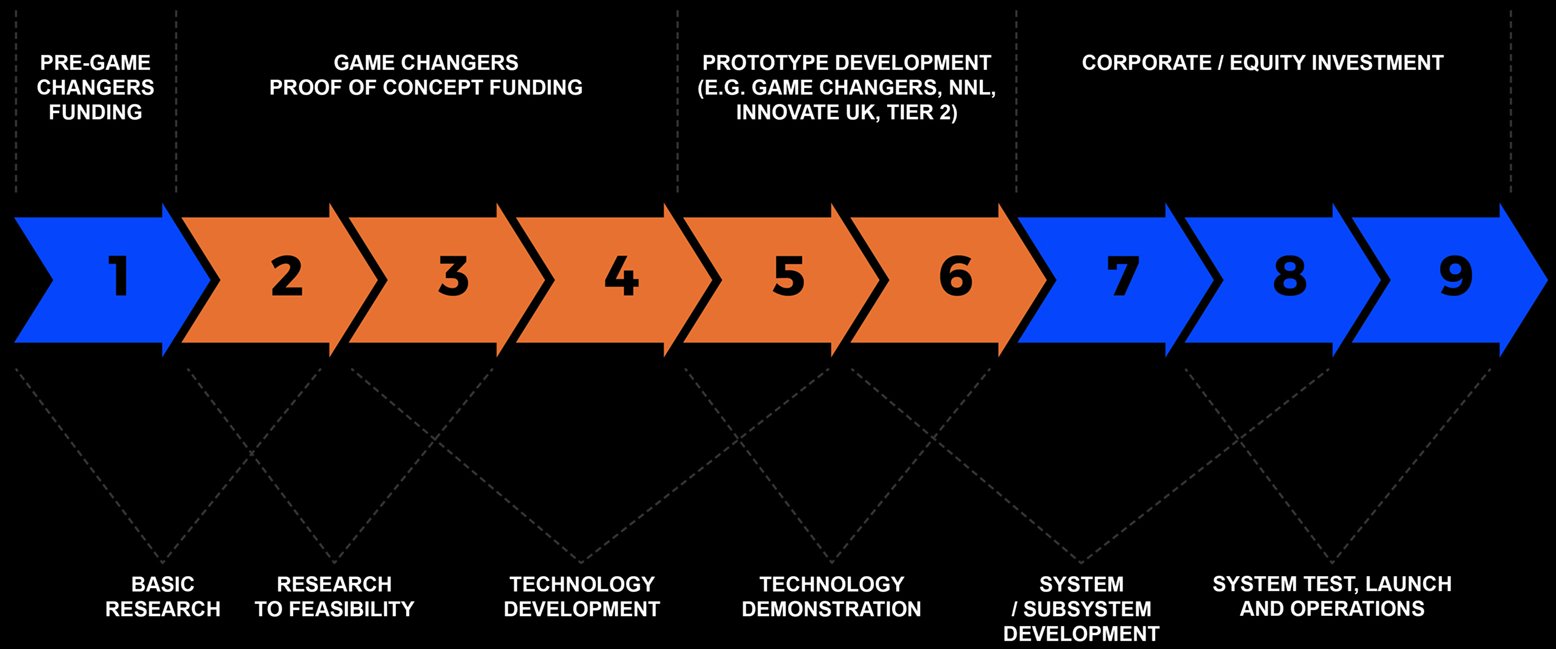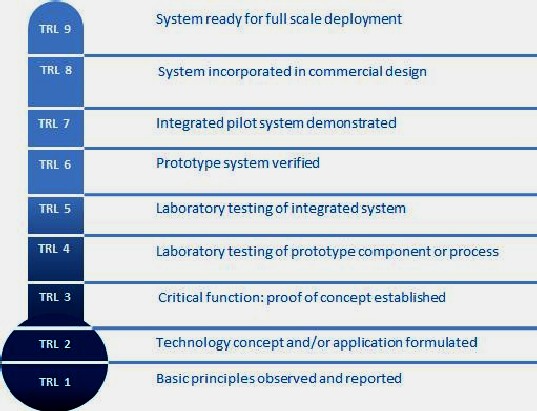|
TRL 7
ABOUT - CONTACTS - DONATE - FOUNDATION - HOME - A-Z INDEX
TRL 1 - TRL 2 - TRL 3 - TRL 4 - TRL 5 - TRL 6 - TRL 7 - TRL 8 - TRL 9 - TRL 10
ROBOTICS - This Nuclear Decommission Authority is looking to robotics as part of their search for technological advances for dangerous materials handling.
TRL
SEVEN - Level 7 – Integrated pilot system demonstrated
Once the SeaVax hull has passed blue water sea trials with verification of the onboard plastic handling automation, navionics, fleet control and satellite based coordination of sweeping operations in principle, the hard and software should be made production friendly.
ABOUT TECHNOLOGY
Technological advances give us the ability to better control our lives, those of other animals and flora and our understanding of planet earth in relation to the solar system and ultimately, the universe. Each technological advance gives us the potential building blocks for new products, processes or controls. During the Second World War technology advanced at a phenomenal rate in the search for weapons to annihilate our enemies - leading to deployment of nuclear weapons at Hiroshima and Nagasaki. This is of course technology that should never have been used against our fellow man. The importance of it being that when pushed and given the opportunity, man can progress in giant leaps. Even if such leaps have consequences that ought to have received more consideration as to long term impacts.
As new ideas are born investors such as stake holders and end users such as our world leaders or commercial entities need to know at what level of development any concept is at so as to alter policies to allow for such use and to prepare existing entities for disruption to existing business models. Two examples of which are the film world and cameras. Cameras no longer use film to process images, making Kodak and celluloid all but redundant. The film world embraced computer generated images and moved with the times. Crunch time is coming for internal combustion engines as we move to electric vehicles that are still not 100% fit for purpose without an effective infrastructure, and so the world moves on. Hence, Technology Readiness Levels, or TRLs became necessary.
TRLs were originally developed by NASA as a method of measuring the maturity of space exploration technology. A variety of different industries, including nuclear decommissioning, now use the same approach.
SCALE - The TRL scale is a metric for describing the maturity of a technology. The acronym stands for Technology Readiness Level. The scale consists of 9 levels. Each level characterises the progress in the development of a technology, from the idea (level 1) to the full deployment of the product in the marketplace (level 9).
HOW READY IN YOUR TECHNOLOGY ?
Technology readiness levels are a method of estimating technology maturity of Critical Technology Elements of a program during the acquisition process. They are determined during a Technology Readiness Assessment that examines program concepts, technology requirements, and demonstrated technology capabilities. TRL are based on a scale from 1 to 9 with 9 being the most mature technology. The use of TRLs enables consistent, uniform discussions of technical maturity across different types of technology.
TRL has been in widespread use at NASA since the 1980s where it was originally invented. In 1999 the US Department of Defense was advised by GAO to use the scale for procurement which it did from the early 2000s. By 2008 the scale was also in use at the European Space Agency as it is evidenced by their handbook. The European Commission advised EU-funded research and innovation projects to adopt the scale in 2010 which they did from 2014 in its Horizon 2020 program. In 2013 TRL was further canonized by the ISO 16290:2013 standard. A comprehensive approach and discussion about TRLs has been published by the European Association of Research and Technology Organisations. Extensive criticism of the adoption of TRL scale by the European Union was published in The Innovation Journal, in that "concreteness and sophistication of the TRL scale gradually diminished as its usage spread outside its original context".
ROBOTICS - Collaborative Robots and Advanced Vision are two of the most cutting-edge topics in automation today.
LINKS & REFERENCE
https://www.gov.uk/government/news/guidance-on-technology-readiness-levels
TRL 1 - TRL 2 - TRL 3 - TRL 4 - TRL 5 - TRL 6 - TRL 7 - TRL 8 - TRL 9
This website is provided on a free basis as a public information service. Copyright © Cleaner Oceans Foundation Ltd (COFL) (Company No: 4674774) 2018. Solar Studios, BN271RF, United Kingdom. COFL is a charity without share capital. The names Amphimax™ RiverVax™ and SeaVax™ are trademarks.
|



